












JOHN PHILLIPS President
TERESA SPENCER General Manager
KERRY SPECKMAN Copy Editor/ Writer
AMBAR RAMIREZ Creative Director
CARMEN MACRI
Social Media Manager/ Lead Writer
KAILI COCHRAN Writer/Designer
Bee-hined the Scene With Local Beekeeper Mika Hardison-Carr
Carmen Macri
Real, Beautiful, Talented: Seseley Monat Jones
Savanna Stillwagner
Carmen Macri
Tip Me Once, Tax Me
Kaili Cochran

SAVANNA STILLWANGER

JOSHUA WALKER Multimedia Journalist

MCKENNA OAKLEY Writer

KALEB STOWELL Writer

ZA’NYA DAVIS Writer
The American Dream: Dead or Redefined?
Jacksonville’s Leap Into the Future: the JTA’s Autonomus Vehicle Vision
Crusaders
Curtain Pulled Back: River City Theatre
Christianity Floods Into the Lives of Jacksonville & Young Adults...Why?
Savanna Stillwagner
FSCJ: One Commencement, Three Graduation Terms
Za’Nya Davis
BEHIND THE COVER: Collage design by Ambar Ramirez
Photos used: School Hallway by Tim Bish on Unsplash
Target Practice by Kim Leary on Unsplash
You Never Think It Will Be Your School: The American Epidemic of Mass Shootings”


I am from the “Baby Boomer” generation. I was born and raised in the South, during segregation. I have experienced many changes and evolutions in our once great nation. There were no black students in my schools until my last two years in high school, 1970-71. But thank God, we came to our senses and strived and continue to correct the horrific injustices and disgrace of segregation.
I experienced the time when women and minorities were relegated to minimal roles and career choices. Besides the prejudice, compensation was also subjected to that “glass ceiling” in spite of their accomplishments and great abilities. Again, our nation strived and continue to correct this short-sighted social injustice.
There was a time when our nation exercised prejudice based on who you can love and marry. Although we are not completely there, again, our nation came to its senses and strived to correct and end these atrocities.
Throughout the past, our country has allowed ignorance, bigotry/prejudice, and greed to plague our common sense and decency. This has resulted in grave injustices to humanity. Hopefully, I was able to demonstrate, that our nation has shown the ability to correct our misgivings; and always instinctively tried to return to our core values as outlined by our forefathers. Now in my 70’s, I fear that our country is taking us on a path of evil from which we will not be able to recover.
I am not pro-Israel, not pro-Palestine and definitely, not pro-Hamas. I am simply a patriot who is pro-American and pro-United States of America’s Constitution. Above all, I am pro-God and pro-humanity. I am of the Christian faith however, I support and respect Judaism, Islam and all the other world religions and their followers. So, the intent of this letter is not to promote a specific religion, ethnicity, nor any political power aspiration. My intent is to wake up our hearts and consciences for the sake of humanity and to save our country’s future.
The October 7 attack on the Israeli citizens should never be accepted or rationalized as a provoked desperate response to an oppressive occupation. Nothing justifies the killing of innocent human beings. Israel has a right to defend its citizens against any terrorist threat. My issue is with the manner in which Israel is pursuing this objective. They (Israel) are overcome with blind vengeance. As a result, Israel is resorting to collective punishment, which is tantamount to violating international human rights law. This campaign of wholesale slaughter, has murdered, via bombing and starvation, tens of thousands of innocent civilians, mostly children including infants. They have leveled homes and buildings, cut off water and medical aid to civilians. Now, who is the terrorist? That is the question that the whole world is asking.
Scan the QR code to read the rest of this month’s mail

Jed Howard

To Hope McMath, social justice advocate, arts educator and founder of The Yellow House, for everything she does to help our city to be a better place. She’s also never one to take center stage, as she posted on social media.

“I am also profoundly inspired by those speaking for justice. Organizers, students, immigrants, business owners, educators, mothers, grandmothers, neighbors. Y’all are courageous, wise, compassionate and needed in this world.”
To Rory Diamond for acting like a wannabe “Trump” on Jacksonville’s City Council. Three of his latest “efforts” have been introducing the controversial immigration ordinance prohibiting organizations from using city money to support services for immigrants; and aggressively pushing to limit Mayor Donna Deegan’s fiscal flexibility and defund diversity, equity and inclusion programs — branding them a partisan ploy and painting them as “wild, liberal spending.”
Diamond’s also shown his true colors by fighting against inclusive policies, meddling with district maps and pushing extremist local ordinances.




June kicks off with a social spark, but the Full Moon in Sagittarius on June 11 has you itching to shake things up — travel, perspective shifts, maybe just a dramatic haircut. Then Cancer’s New Moon on June 25 tugs at your roots: home, family and feelings you swore you didn’t have. Good luck balancing that.
This month, we are reevaluating what wealth means to you, Taurus. Hint, it’s not defined by the number in your checking account. Ask yourself, is your life rich in peace, in purpose? If not, Gemini Season has your back. Especially around June 11, when the Full Moon in Sagittarius lights up your house of intimacy, transformation and soul-deep truth.
All eyes are on your relationships this month. That Full Moon on June 11 lights up your partnership zone, so expect clarity — or chaos… Definitely chaos. Unfortunately for you, the rest of the month refuses to lighten the load. With the Venus-Pluto square exposing truths you didn’t ask for and some of your own that you may have wanted to remain hidden.
You’ve changed, Cancer. You’re not the same person you were a month ago, let alone a year ago. It’s time to own that growth. As Gemini season kicks off the month, your sector of spirituality and closure is lit up, offering a quiet pause before your personal storm rolls in. This is your moment to gently shut the doors of the past so you can step fully into the new ones opening toward your bright, bold future.
The Full Moon on June 11 shines right on your fun zone — romance, creativity and whatever makes you feel alive (and preferably admired). Soak it up. Mars entering Virgo on June 17 gets you fired up about finances — just don’t burn it all in one place. With Jupiter moving into Cancer, it’s about soul work, not spotlight. Yeah, we said it.
You’ve done all the superficial level work, Virgo. Now it’s time to dive deep. On June 6, Venus enters Taurus, lighting up your travel, study and expansion sector. Apply for that online course you’ve been eyeing, book a trip abroad and delve into a new culture. You’re not just building your own foundation—
You’re running the mental marathon this month, Libra. On June 9, Jupiter moves into Cancer and gives your public image a major boost, while the Venus-Pluto square on the same day throws some not-so-subtle shade on your relationships —pay attention to the power plays. The full moon on June 11 brings clarity to that text thread you keep rewriting.
You’re in your feels this month, like it or not. On June 9, Jupiter enters Cancer and expands your worldview in a way that hits emotionally, not just intellectually, while the Venus-Pluto square on the same day exposes who’s really got your back. On June 11, the Full Moon has you staring down your bank account and reevaluating what you truly value. Go deep or go home.
You’re the star of your own love story this month, Sagittarius. Except you get to decide the genre. Rom-com? Paranormal romance? Or maybe a classic contemporary romance? Whatever trope you find yourself in this month, know that on June 8 and 9, Mercury and your ruler, Jupiter, both shift into Cancer, enhancing your intimacy and wealth sector. Meaning that you might wanna be careful before making long-term commitment promises.
You will be relying heavily on your subconscious this month, Capricorn. The full moon is the perfect time for you to go all introspective mode; rest, reflect and maybe start to unravel some of those internal knots you’ve kept wound tight. Mid-month, your relationships take center stage. It’s time to finally “define the relationship.” How scary!
When things feel out of bounds, sometimes falling into routine is the rule of thumb, but as an Aquarius, the rule of thumb doesn’t usually work for you, does it? If you’ve been feeling out of sync, try doing something you would usually never do, like tackling that to-do list you’ve been avoiding. With Cancer Season starting June 20 and a New Moon five days later, it’s time to focus on your body, your mind and your reset.
You’ve been writing love letters to your younger self, Pisces — and now the universe is sending one back. With Gemini season lighting up your home and emotional roots, you’re craving comfort and fresh starts. Try a little redecorating, and invite loved ones to help. Change doesn’t have to be lonely. Once


FIVE, 4, 3, 2, 1…
wait is over, Jacksonville welcomes a new music venue

When word got out that Sun-Ray Cinema — beloved, historic and a true 5 Points gem — was screening its final film, the local reaction was exactly what you’d expect, part heartbreak, part neighborhood group chat meltdown. With the loss of yet another slice of Jacksonville’s cultural fabric, the big question quickly became: what now? Rumors swirled. First, a parking garage (yawn), then a virtual golf center (why?). Neither felt like a worthy replacement for a space that once brought together movie buffs, weirdos, artists and romantics. So when it was announced that a new music venue would be taking over 1028 Park Street, disappointment gave way to curiosity and even excitement. A venue for live music felt like the right kind of tribute. Still a place to go see a show, only this time, the screen was swapped for a stage.
“The building we occupy has such a rich, creative history and we’re honored to carry that legacy forward by continuing to make it a destination for the arts,” Jeremy Hicks, FIVE communications director, shared.
So far, FIVE has held up its end of the bargain by preserving the vintage charm of the original movie theater exterior. The old box office, mostly untouched during Sunray Cinema’s time, has been restored to its former glory and repurposed for its original use. The marquee still juts proudly from the building, lighting up Park Street with who’s performing that night and what’s on the calendar for the week. But step inside, and it’s a whole different story. The interior has undergone a full transformation, fitting, since this is no longer a place for sitting quietly with buttered popcorn. It’s a space built for movement and live music. But the work didn’t stop at choosing whether to keep the original tiles or rip up the old flooring.
The real challenge was curating a lineup that would prove FIVE isn’t just another venue, but a serious contender in Jacksonville’s growing live music scene.
“Our aim is to create unique live experiences and be an asset to the community. We do this by booking the concerts that Jacksonville wants to see and by engaging with the community in a way that allows us to be a part of their everyday lives,” Hicks said. “It all comes down to the artists that we are booking. We love booking emerging artists that connect with younger audiences just as much as we love booking touring legends that draw an older crowd.”
Staying true to its mission, FIVE has booked a wide range of artists and musicians, with genres spanning house, folk, Latin and emo punk. The venue isn’t just bridging gaps within the music community, it’s building bridges across the neighborhood, too. In collaboration with local businesses like Tiger Records, they’ve even hidden show tickets among vinyl bins, turning a simple record store visit into a scavenger hunt for live music lovers.
“We have a deep appreciation for all genres of music and are passionate about celebrating that diversity on our stage,” Hicks noted. “We want to book shows that resonate with the community and give people the kinds of live experiences they’re excited to see.”
No matter what you tend to listen to or what’s on your curated playlists, you’ll want to catch a show at FIVE.


When you think of Florida, you might picture Mickey Mouse, the beach or Florida Man wrestling an alligator. What you should be picturing is nearly a million state-sanctioned stoners puffing away legally. That’s right, while the rest of the South plays moral panic ping-pong, Florida is out here blazing medical weed like it’s our civic duty.
Let’s dive into the numbers that indicate we live in one of the most surprising heavyweight cannabis states in the country.
Forget Cali or Colorado for a second. Florida’s medical marijuana program is a certified juggernaut. As of early 2025, the state has nearly 903,000 registered medical marijuana patients. That’s about 1 in every 25 Floridians, including grandmas, veterans, soccer moms and everyone in between.
In 2023 alone, Floridians legally torched over 7.3 million ounces of smokable cannabis. That’s nearly half a million pounds of flower circulating through dispensaries and into joints, bongs and (let’s be honest) apple pipes all over the state.
Despite the evolution of edibles and vapes, good old-fashioned bud still dominates the Florida scene. About 64% of patients prefer flower as their go-to method of consumption. Why? Because it’s classic, fast-acting. But gummies are on their heels. Over 57% of patients munch on infused chews, likely because they’re discreet, easy to dose and don’t make you smell like a reggae concert.
Beyond flower and edibles, patients in Florida are prescribed tinctures, topicals, vapes and concentrates. Each with their own loyal following. But no matter the form, it all adds up to a medical marijuana economy pushing billions in annual revenue and consumption numbers that rival the country’s recreational states.
Florida doctors write scripts like DJs dropping beats. No seriously, physicians certified millions of ounces in prescriptions last year with the average patient getting about 2.5 ounces per order, according to my research on the net. There are no shady street deals here, just clean, trackable, state-monitored sales from licensed dispensaries. And yes, Jacksonville is holding it down with some of the best-stocked dispensaries in the game.
Weed may not be “recreational” here yet, but if you peek behind the palm trees, you’ll find that we live in a state that’s already quietly consuming millions of ounces of legal weed every year. It’s the South’s best-kept secret, and it’s only getting louder.
So the next time someone tells you our lovely state is all flip-flops, fishing and football, remind them: It’s also one of the biggest medical marijuana markets in the country. Swampy? Maybe. Sleepy? Never. Stoned? Most definitely.


“I think community-based beekeeping is both a literal and a symbolic act of healing a land and a people.”
Self-reliance and sustainability have long stood as cornerstones in Mika Hardison-Carr’s life philosophy. Growing up in a time when the quality and integrity of our food seemed to steadily erode, she decided to reclaim control over what nourished her and her family. What began as a modest experiment — a handful of vegetables planted in her backyard — soon blossomed into a flourishing garden. Initially, the work was manageable; her crops thrived with the help of hand pollination. But as the seasons passed and her garden expand ed, the simple act of tending to it trans formed into something more daunting and demanding.
She recalls the day when she de cided to invite a colony of bees to her garden—not simply to tend a garden but to enlist nature’s most diligent economists in the art of productivity.
“I remember handling the hive and setting the hive and having a sense of its synergy. And it was romantic and it was sexy. It was different. It was unique. It felt revolutionary. Because this hive is one of the avenues that I’m using to remove myself from being de pendent on a food system that’s not sustainable,” recalled Hardison-Carr.
What started as a practical solution soon blossomed into a wholehearted passion she was eager to share with her community. She began rescuing honey bees from nearby neighborhoods, adding them to her thriving hive. Yet, much like her once-manageable garden, the burgeoning colony demanded more room and care than she had initial ly anticipated, prompting her to expand her horizons along with her growing swarm. More than just out of neces sity, she wished to integrate beekeeping in urban neighborhoods and expose disadvantaged communities to agriculture.

Her journey into beekeeping was entirely self-taught, born out of determination and curiosity rather than tradition.
“There are no beekeepers in my community,” she explained. “When people from my neighborhood find out I’m a beekeeper, they’re shocked — they’ve never met a Black beekeeper be -
Much of what she learned came from visiting the homes of older white beekeepers who welcomed her into a world that, historically, hadn’t included people who looked like her. In stepping into that space, she not only expanded her own knowledge but began to redefine what a beekeeper looks like for the next generation.
Hardison-Carr began building a hive at Eartha’s Farm and Market in Moncrief, and what better place to bring her natural pollinators than to a farm that offers the bees nutrients year-round.
“I beekeep here in Moncrief, an area called Health Zone 1, for a few reasons,” she explained. “There are so many flowers on this farm, and often in disadvantaged neighborhoods, there are no flowers — kids don’t grow up with that. But I think it’s important for people to see something beyond their daily life. It’s important for a child to know that there is such a thing as a beekeeper, that there is a place where flowers grow. It’s important for children to have the opportunity to connect science and math and to understand that there’s something besides being a rapper or a football player.
“There’s a soil scientist who comes here. There’s a beekeeper here. There are people who grow food here. And so this place is expanding [beyond] what people think is possible. So I beekeep here, and I intentionally build my business here because the thing that’s different about the Herban Bee is that when you buy our honey, you are investing in the community that you would want to live in. You’re investing in the way you want the world to be.”
There’s a quiet, deliberate trust required when working with an active hive — an unspoken agreement between keeper and colony that Hardison-Carr has cultivated over years of handson experience. She understands, deeply, that the honey isn’t simply hers for the taking; it’s the bees’ lifeline, a product of their labor and intricate social structure. The relationship is both tactical and reverent, built on observation, patience and respect. It took years to hone, and even now, Hardison-Carr insists she remains a student of the bees — always listening, always learning.
Her dedication runs so deep that she launched an internship program through the Herban Bee, inviting others to learn the art of beekeeping alongside her. Many of her former interns have gone on to graduate from the program and now work as salaried members of the Herban Bee team. Interns learned everything from how to safely handle and inspect a hive to identifying brood patterns, recognizing signs of disease and understanding the social structure of a colony. But more importantly, Hardison-Carr instilled a deeper awareness of the bees’ role in the ecosystem and the ethical responsibility that comes with tending to them. For many, it was their first time seeing a hive up close, let alone being trusted to tend one.
“Beekeeping as a tool for self-reliance. Beekeeping teaches patience, observation and resourcefulness. All of the same principles that are required to rebuild a community from the inside out,” she explained. “Pollinators are essential for food sovereignty, you know, being in the driver’s seat when it comes to your food. I think community-based beekeeping is both a literal and a symbolic act of healing a land and a people.”
There’s one thing Hardison-Carr wishes more people would do in honor of the “save the bees” movement: plant native, pollinator-friendly plants. While hashtags and honey jars are helpful in raising awareness, she emphasizes that meaningful change starts in our own backyards. Native plants not only provide essential nectar and pollen sources for local bee populations, but they also require less water and maintenance, making them an easy yet impactful step toward restoring ecological balance.
If you are interested in Hardison-Carr’s hive, check her out at Eartha’s Farm and Market or head over to theherbanlife.org.




The dream of being in the film scene didn’t end in her younger years, when she played her part in “The Wizard of Oz” in an elementary school play. The dream reaches beyond the ruffling of audition papers and the click of the camera. Seseley Monat Jones, a Jacksonville actress, has aspirations to be known globally — not only in acting, but also in script-writing and producing. Her story is one of faith, determination and a deep love for the arts, both on and off screen.
“Folio” sat down with Jones to dive into her journey through the acting world, what makes her tick in this difficult industry and what keeps her motivated through the hard times. Not only did she share her deepest dreams and the story plots of her own life, but she also told us why Jacksonville has been a launching pad for her career.
Jones also spoke about her most recent role in “The Devil Came to Duval,” where she plays the Devil and took part in some behind-the-scenes work as well. Her work behind the camera goes beyond what happens on set, though. She creates content to inspire and challenge her followers with deep, intro spective questions. Her segment “Ses on the Sofa (available on her Instagram at @seseleymonatj) features Jones asking followers thought-provoking ques tions like would you ever date a man who used to be a playboy?” With more than 9,500 followers on Instagram, her viewers regularly chime in with their thoughts.
Want Jones’ full story? Scan the QR code below to hear her journey in her own words and find out where to watch her latest release.






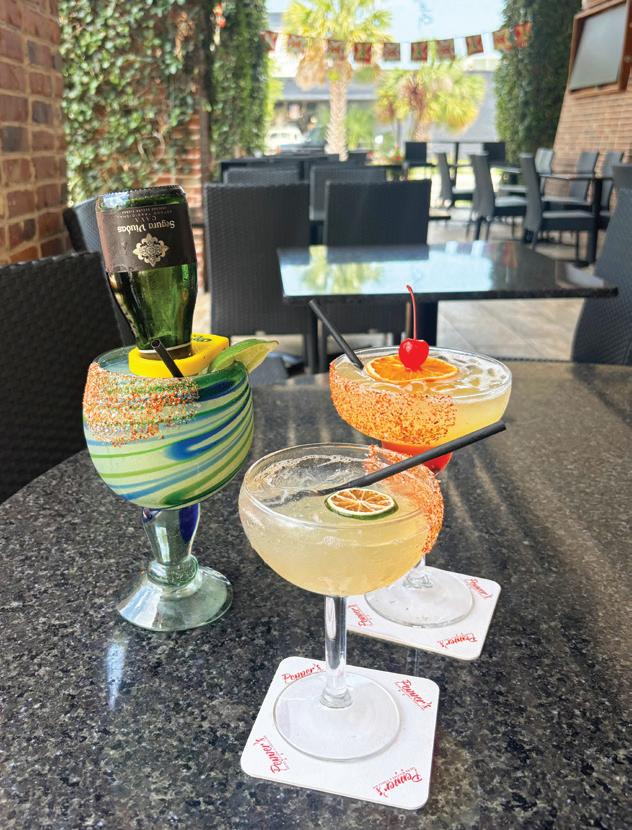

Words & Photos by Carmen
Macri
Tucked away off Southside Blvd, you’ll find another one of Jacksonville’s hidden gems — but this one comes with a side of warm Afghan bread and a whole lot of soul. Maschall’s Kitchen is serving up authentic Afghan cuisine that hits you right in the comfort zone. Family-owned and unapologetically flavorful, this spot is where generation-old recipes meet Jacksonville’s growing love for global eats. If you’ve never had kabuli palaw or a chapli kabob, consider this your official invitation.
But before we talk about Maschall’s Kitchen, we need to travel back in time to Jacksonville in the early ‘90s.
Sayed Hashimi has always carried a deep love for his culture — and an even deeper drive to share it with the community around him. That passion runs in the family. Long before Maschall’s Kitchen opened its doors, there was Khyber Pass, the original Afghan eatery owned and operated by Sayed’s late father. It was more than a restaurant — it was a legacy. And now, Sayed is picking up the torch, serving up the same rich tradition with a fresh new name.
After Khyber Pass was sold, its absence lingered — a ghost of rich flavors and warm hospitality that once filled a void in Jacksonville’s food scene. Authentic Afghan cuisine became nearly impossible to find, leaving behind a craving that couldn’t quite be satisfied. It was only a matter of time before Sayed and his wife, Sajeda, stepped in with Maschall’s Kitchen. What started as a humble catering company quickly gained traction, feeding not just stomachs but a growing demand. And when that demand became too big to ignore, Sayed knew it was time to bring his father’s legacy full circle — with a brick-and-mortar spot built from tradition, love and a lot of flavor.
That leads us to today, well, yesterday.
He described it as nothing short of life-changing, even admitting he never knew rice — yes, rice — could taste that good.
Once the rush settled, Sayed joined us at a table and began to share his story. But instead of talking up the food, he let it speak for itself, offering up authentic Afghan burgers and a warm slice of that fresh-from-the-oven baklava. One bite in, and the message was clear. No sales pitch needed. By the end of the meal, he didn’t just have our attention — he had two new loyal customers.
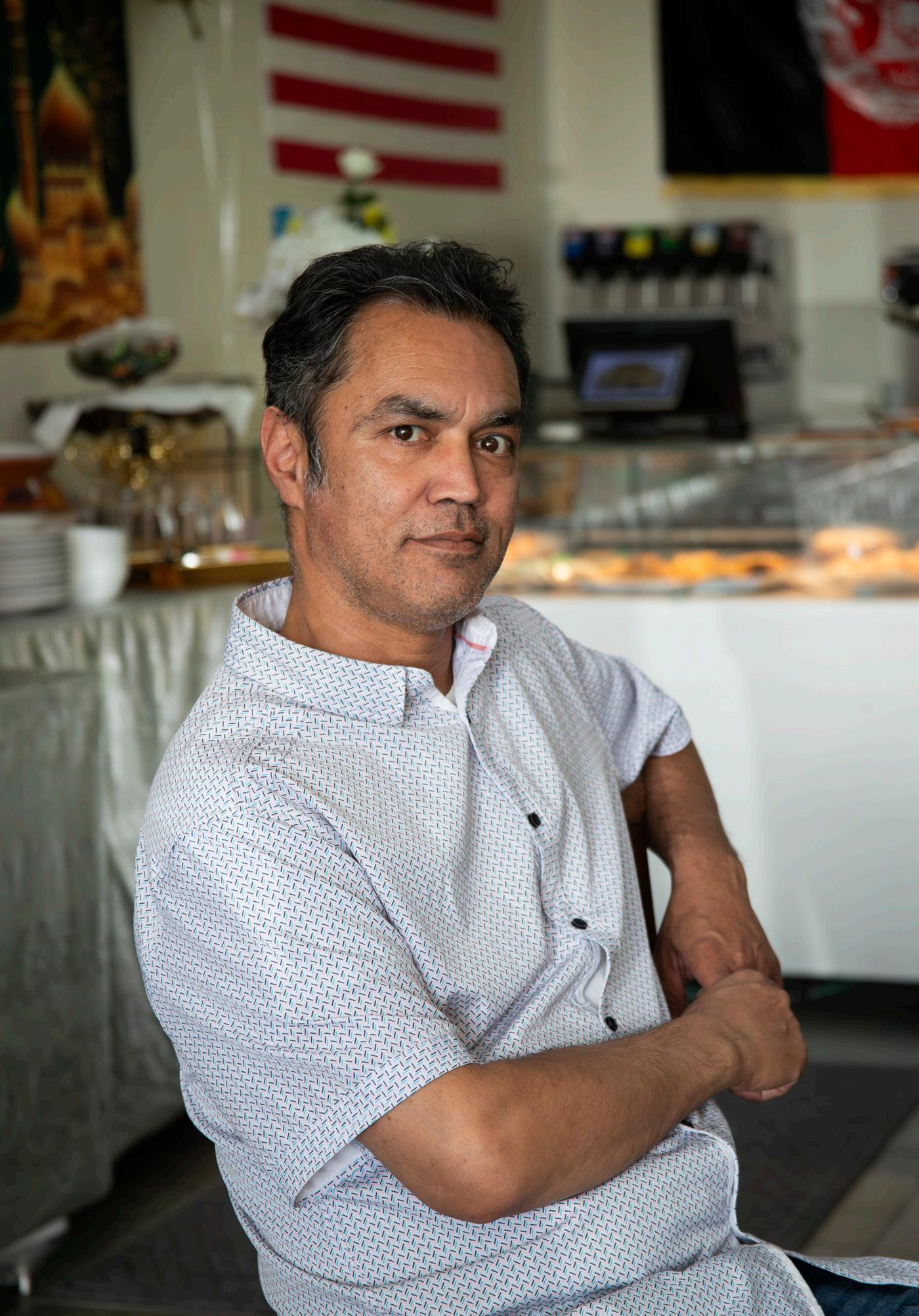
An Afghan burger isn’t your typical all-American patty-in-a-bun. Picture marinated, diced chicken piled into soft Afghan bread, drizzled with two house-made chutneys, crowned with fries, a boiled egg, cilantro, crisp veggies and more spices than we could count. We braced for something familiar, but the first bite set off a full-on flavor explosion. Its colossal size had us questioning our appetites — until that tangy, herby goodness kicked in and powered us through.
Minutes later, plates were spotless and we were already plotting dessert.
Like clockwork, Sajeda emerged from the kitchen, hands full with a plate of freshly baked baklava that looked almost too perfect to eat — almost. Packed with finely chopped walnuts, soaked in a syrup recipe passed down from Sayed’s mother, and finished with a delicate dusting of crushed pistachios. The edges were just crisp enough to crackle with each bite, while the center melted into sweet, nutty layers of perfection. It wasn’t just dessert — it was heritage, carefully crafted and proudly shared. One bite in, and we understood why customers keep coming back for more.
Sayed had mentioned that Maschall’s kitchen is known for two things, their kabuli palaw and their baklava… and after yesterday, it is no surprise as to why.
Walking into Maschall’s Kitchen, we were instantly greeted by the sweet smell of freshly baked baklava and a wave of warm, welcoming faces. Sayed was tied up with a steady stream of customers picking up to-go orders — a good sign for any restaurant — so while we waited, we struck up a conversation with one of his close friends and longtime regulars. It didn’t take long for him to start raving about his first taste of Sajeda’s cooking.
As we sat there raving about every bite, Sayed smiled and shared a memory that clearly still stuck with him. The first time he tried to recreate his mother’s legendary baklava, the intention was there, but the execution… Not quite. He accidentally left her prized syrup in the oven a little too long, and by the time he realized, it was a lost cause. His mother stepped in without a word, remade the entire batch from scratch, and had it ready in time for his class presentation the next day.
Needless to say, the baklava stole the show — and the whole class went back for seconds.
“She had a secret syrup, and nobody knew what the secrets were. I know what is in it now, but I can’t do it like she did,” he laughed. “Well, the class loved it. I told them what had happened. And if I had brought the actual finished product, I don’t think it would have been edible. But, I got an ‘A’ for effort.”
It’s that level of dedication — the kind rooted in family, tradition and pure love for the craft — that keeps customers coming back for more. But it’s not just the food. Maschall’s Kitchen carries the spirit of Afghanistan in every corner, from the warm hospitality to the cozy, welcoming vibe that makes you feel more like a guest in someone’s home than a customer in a restaurant. On Saturdays and Sundays, that feeling gets turned up a notch with an all-you-caneat buffet, designed to bring people together around a table the way Afghan families do; sharing a homemade meal, one generous serving at a time.
In just six short weeks, the Hashimi’s have done more than open a restaurant — they’ve built a community, a tight-knit family of loyal customers.
“The doors are open to anybody. My dad always told me, Take care of your customers because without them, there’s nothing,” Sayed recalled. “So when we open our doors, we pray to our God for giving us the opportunity to serve our customers. Because it’s them that make us. We have just been blessed with the opportunity to serve our customers.”
Content Partner
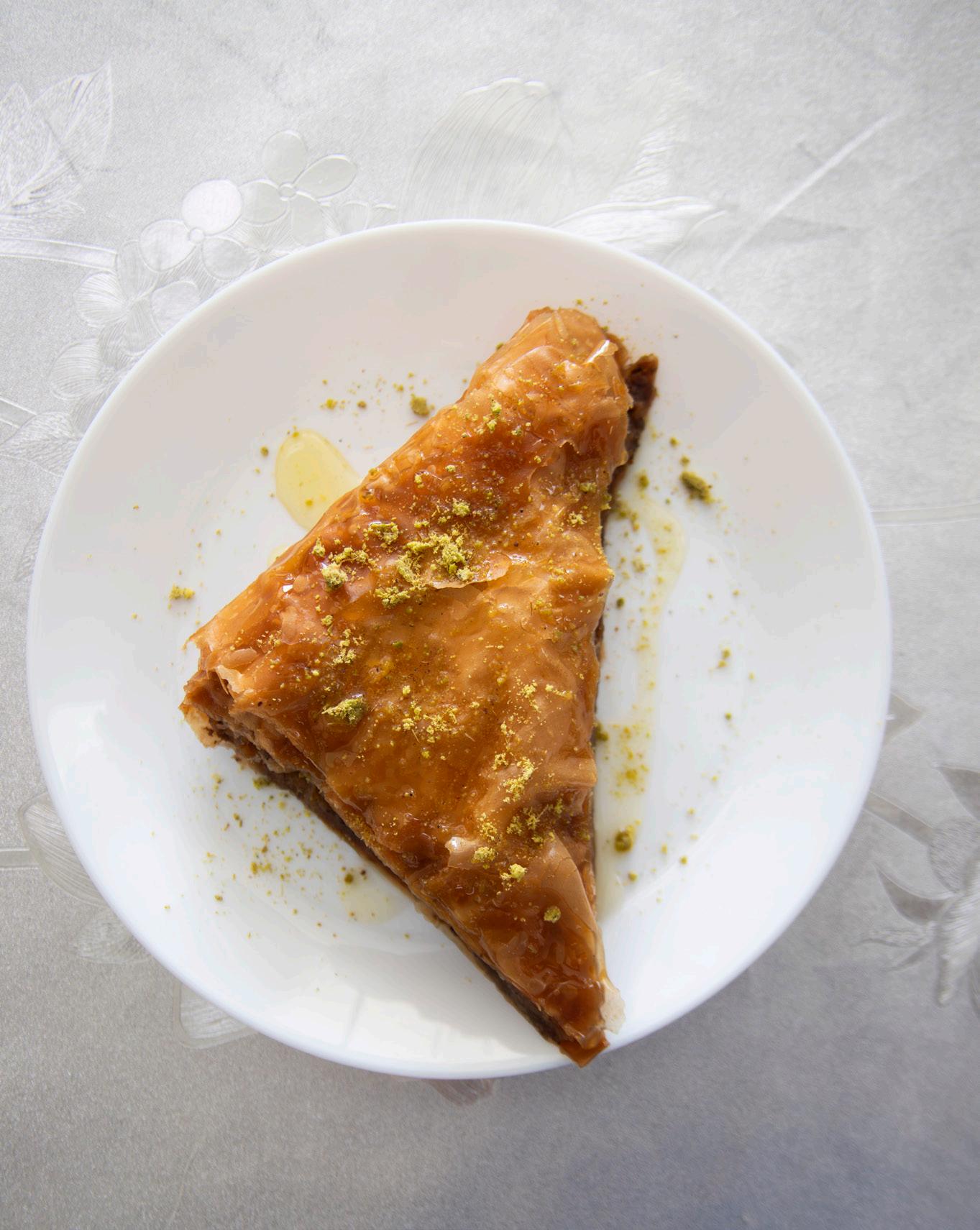
FRIDAY, JULY 4 – SUNDAY, JULY 6
Friday, July 4, 7:05PM ASCENSION ST. VINCENT’S JULY 4TH!
There’s no better way to celebrate Independence Day than by attending a game of America’s favorite sport....BASEBALL!!! Be sure to stick around after the game for our BIGGEST firework show of the season! You don’t want to miss out!
Saturday, July 5, 6:35PM NOLAN RYAN BOBBLEHEAD
Be one of the first 2,000 fans to enter the Main Gate at the Baptist Health Centerfield Plaza and receive a bobblehead of Nolan Ryan, who was a pitcher for the AAA Suns! Giveaways only available when entering at the Main Gate on Georgia St. Presented By Miller Electric and Arlington Toyota

Sunday, July 6, 5:05PM FOREVER VETS ANIMAL HOSPITAL CANINES AND CRUSTACEANS (DOG DAY)
TUESDAY, JULY 8 – SUNDAY, JULY 13 VS

The Jumbo Shrimp and Forever Vets Animal Hospital welcome you and your canine companion to VyStar Ballpark! Canines get in free as long as their human companion buys a ticket. It’s Baptist Health Sunday Family FUNday, so head out to the center field gate where we will host catch on the field until 20 minutes after the gates have opened. Kids can also feel like the pros after each Sunday game by running the bases once the field is clear. Plus, face paint, balloon animals & more, presented by Baptist Health. TICKETS













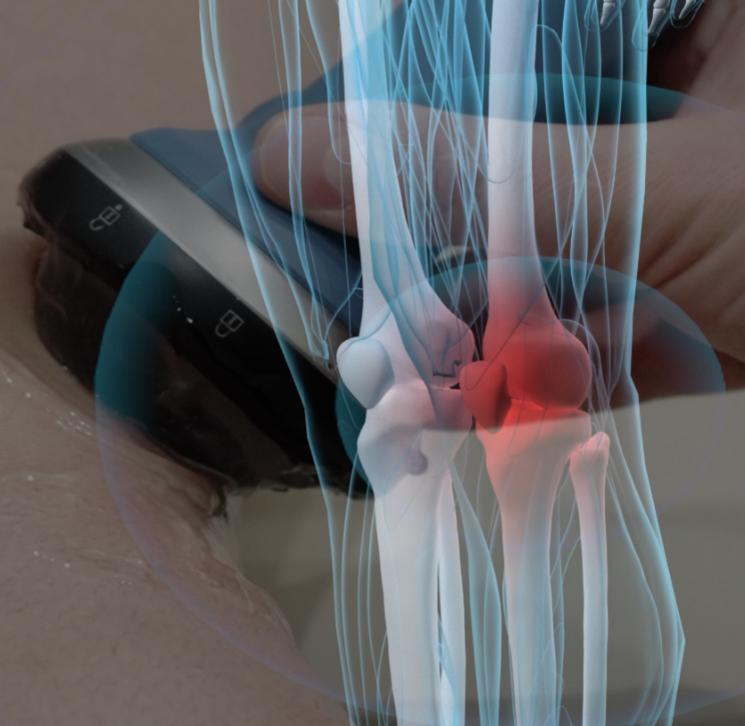



With tipping and tax laws evolving, platforms like Cash App are changing not just how people pay, but also what is owed on tax day.
Before 2024, you needed at least $20,000 in payments and 200 transactions from a full calendar year to be required to report earnings. But now, according to IRS.gov, the reporting threshold has been lowered to at least $600 in payments, regardless of the number of transactions. This is per platform, not a combined total.
The 1099-K is an IRS return used to report transactions made through card payments and payment apps. If you receive more than $600 in payments, you’ll receive one of these to file. This applies to any third-party apps including Venmo, PayPal and Cash App.
The number of Cash App users is continuously increasing. What started as a one-on-one transaction app between friends is now widely used in service tipping, freelancing, tattoo shops and barber shops.
According to Priori Data, “Cash App [had] 57 million users in 2024 and is projected to reach 60 million users in 2025.”
The evolution of using Cash App regularly comes from its convenience. It’s an easy-to-use app with customizable handles and QR codes with no swipe fees.
Most usage happens in settings where tipping is common, like small businesses and restaurants.
“As of 2024, the largest share of Cash App user spending goes to Big Box & Discount Retailers (22%), followed by Restaurants (19%) and Other Retailers (15%),” according to Priori Data.
Digital tipping is more convenient but can come with downsides. Some people are unaware that the 1099K exists (and that they need to report this income) until it’s already tax season.
But even if you are prepared to be faced with the 1099-K, cashless tipping takes away the “fast money” that comes with cash. While funds can be deposited immediately, apps can still freeze funds, delay access and even charge transfer fees.
There is a gray area in taxing third-party apps. Not every form of payment is income, so where is the line drawn? The IRS says gifts are not taxable and service payments are, but how can we tell which is which when sometimes it’s not so obvious?
Cash App includes a Business Account feature for entrepreneurs and business owners. The business feature makes it more convenient to manage and sell goods and services. Although this does not mean you’re exempt from receiving the 1099-K tax form if you aren’t a business owner, it’s more efficient to use the app when you are one.
But some Cash App users aren’t associated with a business at all. Or some who use their account for splitting lunch, gifting birthday money and getting paid for work, without setting up a business account. This can make it difficult to properly track what is taxable and what isn’t.
Cash App now requires a memo for all transactions in order to close any loopholes. According to Block Inc., requiring a note eliminates any guesswork down the line for what each payment was for. This allows for clearly seeing what was for subscriptions, rent, or splitting the bill with friends.
Cash App and other third-party platforms have redefined how we tip, how we track and how we’re taxed. In the app economy, every dollar leaves a digital footprint, transforming simple acts of gratitude into complex tax considerations. Service workers and users should stay informed and prepared to navigate this new change in filing taxes.






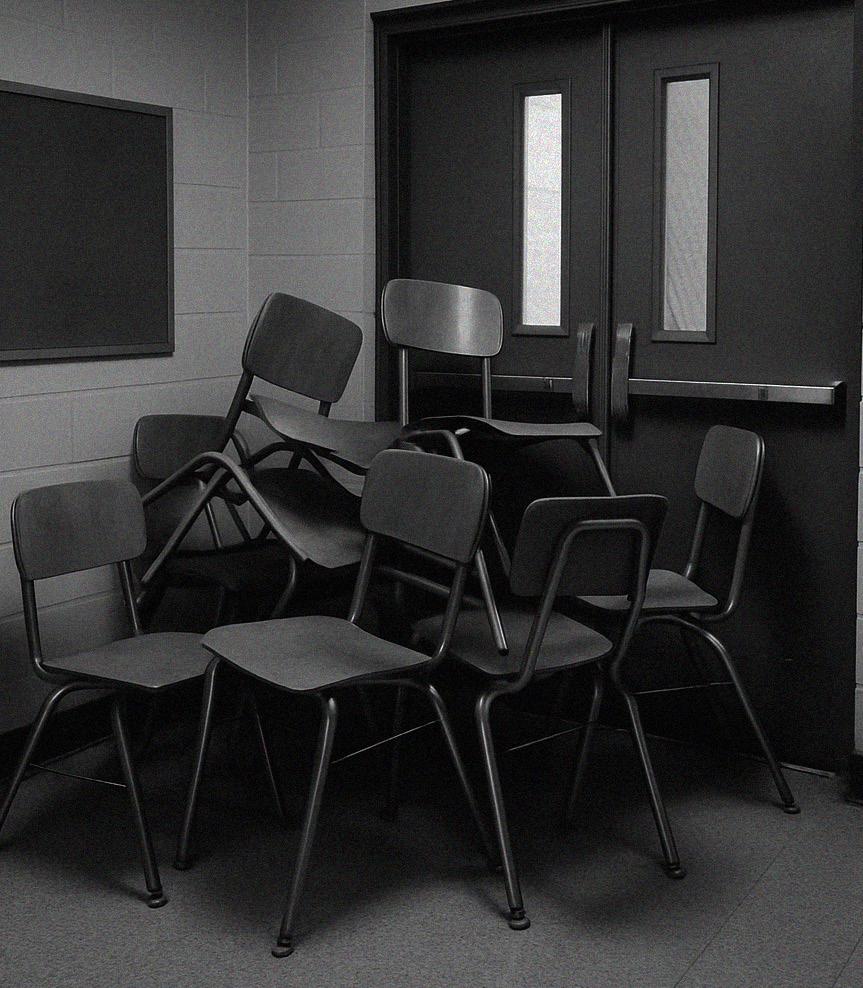
At 11:57 a.m. this past April 17, a shooter opened fire on my college campus.
I’m an English major at Florida State University, and before that Thursday became the worst day of my life, it was shaping up to be pretty sweet.
I had woken up early to rehearse a class presentation I had later that morning. Fueled by my usual breakfast and a cup of offensively-strong coffee, I felt ready to get after the “A.”
The first student to present, I was overly enthusiastic, waving my hands at the screen to distract from my shaking knees. On the walk back to my seat, my phone buzzed with a notification from my professor: “In-Class Presentation: 100%.”
Giddy and relieved, I sat back and day-dreamed about the sugary cold-brew I’d grab from the Student Union Starbucks to celebrate.
That’s when the first shot was fired outside the Student Union.
The emergency alert consumed the projector screen, becoming an image that is now uncomfortably permanent in my memory — one that still doesn’t feel real. It sounds tired, but if there were better words, I’d use them.
As my legs throbbed and hands trembled, I followed my peers and professor out of the classroom to the nearest parking garage, eager to get off campus as quickly as possible. Once the adrenaline subsided, terror set in.
Where were my friends?
For the next few hours, I texted everyone I knew in a panic I had never experienced before. And I wasn’t the only one. Almost immediately, the stream of “Where are u?? Are u ok??” texts began to flood my phone. All day, I’d receive messages and calls, from distant relatives to high school acquaintances. Group chats especially were ablaze as everyone tried to track down where their friends were last seen. No one wanted to say what we were all thinking.
What if they were at the Union?
I was lucky. My classroom was far from the scene, and I was able to quickly and safely evacuate. Many weren’t so lucky, trapped near the gunfire and awaiting armed police escort — two of my friends amongst them. One friend was trapped in a classroom whose door did not lock and opened from the outside, eliminating any chance of barricade. I wanted to call her but was paralyzed by the realization that I couldn’t.
What if a phone ring gave her and her peers’ location away to a shooter?
Another friend was heading toward the Union when the first shot rang out. She immediately turned and ran for her life. It’s hard for her to talk about, but she told me that the saying is true: when it’s gunshots, you’ll know.
Thanks to the responsiveness and bravery of the Florida State Police Department and Tallahassee law enforcement, the shooter was apprehended within three minutes. But at the time, we didn’t know that.
Well-intentioned rumors boomeranged, and widespread panic seared through my community in a way I’d only ever seen in the movies — and pray to never see again.
In the days following, though, the outpouring of support testified to our school’s resilience. Flowers, teddy bears, baseball caps and handmade signs blanketed the brick beyond our Student Union, forming a watercolor of memorial to reconcile a site of so much horror. It returned to our community as a place of healing and hope, and candlelight vigils adorned our evenings as remembrance for the two lives lost.
But we’re still left with this: it took only three minutes to change so many lives forever. Two members of the community murdered, six more injured, and the rest heartbroken, angry and stunned.
We learned the worst cliché to be true that day: You never think it’ll be your school.
But for more and more of us, it is.
Mass shootings — from schools to convenience stores — have been growing steadily since 1966. According to data compiled by the Rockefeller Institute of Government, the past decade has witnessed especially notable spikes. While you may have noticed the uptick in news coverage, this statistic from an “American Journal of Public Health” study brings the issue into sharp focus: roughly 31% of globally reported mass shootings occur in the US. This begs a critical question: Is the issue an American one?
There are many competing theories. Considering gun violence overall is on an upward trajectory in the United States, some argue the broad access to firearms and the volume of such weapons in circulation are contributing factors. In 2020, according to the BBC News article “Why number of U.S. mass shootings has risen sharply,” U.S. gun sales reached a record high of 23 million — a 65% increase from the year before.
So are more regulatory gun laws the answer? A study conducted by “The American Journal of Surgery” titled “Trends in mass shootings in the United States (2013–2021): A worsening American epidemic of death” insinuates stricter legislation leads to fewer monthly mass shooting-related deaths.
If this is true, the decision passed by the Florida House of Representatives this past March to lower the minimum age to purchase long guns from 21 to 18 seems ill-timed and ill-advised. The decision reverses the precautions originally placed to raise the minimum age to 21 after the 2018 mass shooting at Marjory Stoneman Douglas High School in Parkland, Florida. Though the Senate version of this bill, HB 759, is yet to gain significant traction, its introduction in the House reflects the potential direction of Florida gun laws.
“Folio” reached out to our local State Representative Angie Nixon, who represents District 13 in Jacksonville, to gain a clearer sense of where Florida’s gun policy may realistically lead.
According to Rep. Nixon, the current political climate of the Florida legislature favors greater leniency in gun laws. She predicts the lowered minimum age for purchasing long guns to soon clear the Senate.
“I think there’s a strong possibility it will pass,” said Nixon. “It’s disturbing and upsetting that instead of working to ensure our children and young adults are safe, parents, like myself, have to worry about whether our kids will potentially be slaughtered just for attending classes.”
Nixon characterizes some of her colleagues in the House and Senate as pandering to “extremist” gun accessibility agendas — meaning the precedent for loose regulations could extend to handguns, too. Considering handguns are used in approximately 75.1% of reported mass shootings in the United States, per data provided by the Rockefeller Institute of Government, this issue is of great concern to those advocating for an end to school-based gun violence.
However, the issue of school shootings alludes to causes greater than preventive legislation and the overall back-and-forth of our country’s politics.
Despite legislative efforts to shape the future of gun ownership in the US, the problem is ultimately cultural. Lawmakers may respond to the violence and include them as bullet points in broader campaigns, but suited donkeys and elephants aren’t handing out guns with sticky notes that say “open fire.”
Setting aside contentious headlines, what compels individuals to commit acts of mass violence? The theories corroborated by research may surprise you. The two most popular beliefs — that violent video games or mental illness are responsible — are not backed by the evidence.
To gain insight into these misconceptions — and to better understand what research does tell us —“Folio” reached out to some experts in the field.
One is Angela Mann, a licensed school psychologist and professor at the University of North Florida. Her research centers on factors that contribute to the school-to-prison pipeline — essentially, what keeps students in school and what keeps them safe there. According to her, the findings are clear.
“Creating inclusive, welcoming school climates is a really critical part of school safety,” Mann said. She emphasizes the importance of social-emotional learning and counseling as means to prevent violent behavior, as it teaches students conflict resolution and positive emotional regulation. Following the 2018 shooting at Marjory Stoneman Douglas High School in Parkland, Florida, there was an initial push to expand these sort of schoolbased mental health services. Unfortunately, Mann reports, the momentum has quieted. There remains a significant shortage of school counselors, psychologists, and other staff to provide this critical support.
Furthermore, she describes the ongoing attempts to compose a profile for the “typical” mass shooter as counterproductive and actually inhibiting effective prevention measures.
“Looking at some of the data around school shooters, what we know is there unfortunately isn’t a complete profile,” Mann said. While certain demographic patterns seem to be recurring, such as most shooters being white, young and male, Mann stated the research does not provide enough characteristics to reliably predict perpetrators.
A report conducted by the U.S. Secret Service titled “Protecting America’s Schools: A U.S. Secret Service Analysis of Targeted School Violence” supports this notion. Though the report notes that many shooters have identified themselves as experiencing some sort of social “grievance,” like bullying, these experiences are too common to perform as accurate predictors.
Similar to the pitfalls of labeling a broad group like students who feel socially excluded as potential perpetrators, Mann warns against attributing mass shootings to mental illness.
“Sometimes there’s a narrative about mental health being an issue. Amongst the school safety community, there’s a real push back against that because there are lots of people that have mental health concerns and don’t act in these ways,” Mann said.
Mann ultimately cautions against behavioral profiling that strays the focus from investing in longterm solutions, like increasing mental health resources in schools.
For more information on the topic, “Folio” also spoke with Stephen Brock, a professor at California State University in Sacramento and a leading expert in school crisis response. As a former president of the National Association of School Psychologists, his research focuses on helping schools cope with the aftermath of violent events. His proximity to the issue familiarizes him with the factors that may have contributed to them in the first place — firearms accessibility being one of them.
“There is a link between access to firearms and firearms violence,” Brock said — which we all may have been able to guess.
Brock informed us that violent acts are also often times impulsive. The greater the delay between a person’s impulse and their ability to access a firearm — especially considering many youths obtain guns from friends or relatives — the more lives are saved.
Yet, both Brock and Mann agree that labelling any single factor as the cause of mass violence is premature. “The research is very difficult to do — to prove a causal connection — because you have to deliberately manipulate variables,” Brock said.
While associations can favor causation, there is no lab protocol for running an experiment on a societal epidemic. These aren’t the sorts of variables you can fix.
There is a current theory that offers a promising angle, though. And it involves the media — including publications like “Folio.” It’s called the contagion effect theory, first proposed by the “American Journal of Public Health” in a study titled “Mass Shootings: The Role of the Media in Promoting Generalized Imitation.”
Contagion effect theory suggests that the prolific media coverage of school shootings and similar acts of mass violence increases the probability of these acts being imitated.
To put it simply, the more attention given to the shooter and the details of the attack, the more likely others will imitate them. Despite the negative coverage, shooters are still granted a perverse notoriety. With the repeated play-by-play accounts of their shootings, individuals are left with a model to mimic, and the media’s “feedback” on their “performance” even provides them with standards to compare themselves to.
When asked their opinions on this theory, Mann and Brock concurred that there is a connection between the media and the rise in violence. Mann noted that shooters often cite previous incidents with extensive media coverage as their inspiration. Clearly, we need a new approach.
We can start with how we talk about the tragedies, especially in the press.
Just think of the word “Columbine.” It has become cemented in American vernacular, evoking instant recognition and operating as a shorthand for mass violence. The 1999 shooting and attempted bombing at Columbine High School left a dark footprint on our culture, and its frequent reference in conversations, online forums, music and films has unfortunately created an aura of legacy for the deranged individual.
In response to such dangerous effects that can be fueled by the press cycle, the Center for Journalism Ethics has begun to develop new guidelines on reporting that minimize the attention given to shooters.
In their recent article “Balancing truth and trauma, media ethics in school shooting coverage continue to evolve,” they encourage journalists to exclude shooters’ names, photos and manifestos.
There is also a move to exercise more discretion when interviewing witnesses on-site. Survivors’ disorientation and shock complicate notions of informed consent, and capturing someone’s raw reaction to trauma can also contribute to the spread of misinformation. Movements like No Notoriety are already advocating this effort to prevent shooters from finding a platform in the media, endorsing the idea that responsible coverage really can make a difference.
As someone who witnessed the impacts of media on my campus firsthand — and as a writer myself — I can say I wholeheartedly agree, especially with respect to the adverse effects that media involvement can have on survivors and grieving communities.
When you’re bringing a bouquet to a memorial and seeking a moment of silence with your peers to try to find a semblance of comfort amidst something unimaginable, the last thing you want is a camera in your face. Or to spot a reporter joking with their colleagues in your periphery.
I heard several of my friends say that day, “Why don’t they just get their picture and leave?”
SO HOW DO WE “GET OUR PICTURE AND LEAVE” AS A SOCIETY?
How do we leave these tragedies in the past and approach a safer future?
The call for responsible reporting applies to every publication — including us here at “Folio.” You’ll notice I don’t mention the name of the shooter, their motives or offer a play-by-play of the attack. Instead, I write about what matters: I detail how it affected my friends and me, how I saw my community come together, and how it bred an urgency in all of us to find answers.
In the face of increasing violence, we must give platform to the voices of those who have been hurt — if they wish to speak — and leverage this emotion for change.
To my fellow journalists, report with empathy. Make every decision with discretion, even if it is a split-second one. The survivors you interview have been making split-second decisions, too — but theirs were life-or-death. It is not enough to document the violence and seek answers. We also have to protect those living through the trauma.
To our local and federal lawmakers, with respect for the rights afforded to citizens by the Constitution, consider how we may exercise these freedoms with wisdom and care. Especially with so many of our nation’s youths already being adversely affected.
To those shaping educational policy and funding, consider mental health services for students as vital and not optional. Designate qualified staff as support and invest in the next generation.
To everyone else, dig deeper than the sensationalized headlines and the familiar boogeyman. Don’t feed the frenzy. Mourn with the victims and reject media that immortalizes the killers.
In fact, forget them altogether. Everyday, I choose to forget mine.


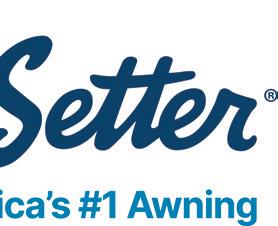

Ah, the ominous success sequence: graduate from college, land a good job, get married, buy a house and have children. The outdated formula that so many once came to America chasing, an idea noticeably recognized by a suburban house encapsulated with a white picket fence. That’s right, the American Dream.
This shiny life package, once chased like a golden ticket to happiness, was the image stamped into our collective psyche: suburbia, stability and a suspiciously well-manicured lawn. But let’s not get ahead of ourselves. Let’s start at the beginning.
According to Britannica, the American Dream is the belief that the U.S. is a land of opportunity, where anyone, from any background, can rise up the ladder toward freedom and equality with enough grit, elbow grease and the will to succeed. That dreamy ideal traces back to the first European settlers who fled tyranny in search of a fresh start. North America became the blank canvas, a space where freedom and self-determination could finally take center stage. The irony of how the Europeans colonized North America for that blank canvas doesn’t escape me, but we won’t get into all of that right now.
The idea of the American Dream goes back well before 1776, but the phrase didn’t appear until 1931, coined by historian and businessman James Truslow Adams in “The Epic of America.” Adams’ take on the American Dream didn’t necessarily follow the success sequence; it was centered around aspiring to be the best version of one’s self and rise above any preconceived socioeconomic hurdles. His dream wasn’t about twocar garages or Pinterest-perfect homes. Yet, somewhere along the way, the script flipped.
The dream got a glossy makeover, wrapped in materialism and tied with a bow of societal expectations. Success became a checklist, not a feeling.
While the American Dream has stood the test of time and has been invoked by many American presidents and voters as a universal framework to measure success, the ideal is muddled and unclear. For some, the American Dream is measured in material wealth and possessions. To others, the dream is exactly as Adams first defined it, the race to become the best version of yourself, however you see fit. But to many, the American Dream is dead and buried beneath political schemes and a capitalist economy that never truly gave everyone an equal chance.
Many have argued that the American Dream is less of a dream and more of a tool. A shiny, well-worn wrench used to tighten the bolts of the status quo and push individualistic values. At its core, it’s been a motivational slogan, one echoed by politicians and quietly woven into the American psyche, nudging us to hustle harder and keep the capitalist wheels spinning. And in a way, it’s a manipulative tactic, a blanket term that doesn’t identify the very real disparities among communities and Americans. It sells the idea that if you play by society’s rules, you’ll win, regardless of where your “start” line happens to be. But that thinking props up existing power structures while quietly squashing collective action in favor of personal grind.
President Donald Trump has even nodded to the phrase, giving it a patriotic polish, describing it in his first congressional speech back in March as
“surging bigger and better than ever before.”
Funnily enough, while politicians and policies use the American Dream as a rallying cry, a report from the Sine Institute of Policy & Politics found that while Gen Z and millennials remain hopeful about their futures, their political expectations are...well, bleak. In a survey of 1,568 adults aged 18 to 34, the majority were most pessimistic about their political future when defining their version of the American Dream. As NPR summed it up in “For young Americans, politics breaks the American dream instead of building it,” only about a third believe they’ll see a more functional, representative government than the one their parents got.
Sure, family, community and education still rank high as positive forces — but nearly half of those surveyed said the political system and the way we elect officials, has done more to hold them back than to help them build their dream.
Over 40% of young Americans say they don’t trust the very institutions that claim to hand out the dream. The power that created it is the same power that now makes it feel out of reach.
The American Dream was once not just a dream but a promise. A beacon. And for many immigrants, it was a lifeline. You can still picture the glossy propaganda: “Come to the land of the free!” A place where anyone, no matter their past, could work hard and build a future.
Immigrants, in many ways, became the living embodiment of the American Dream.
They crossed oceans and borders not with wealth or status, but with sheer willpower and hope. For those fleeing war, poverty, or persecution — think Bosnian refugees of the 1990s or Iraqi families displaced after decades of conflict —t he dream didn’t need to come wrapped in a white picket fence. The very option of a future was enough.
And for much of the 20th century, American policies actively encouraged this vision. The Immigration and Nationality Act of 1965, for example, prioritized skilled labor and family reunification, building on the idea that immigrants would contribute to, and benefit from, the Dream.
But while the dream may have drawn people in, it hasn’t always kept its promise. Systemic barriers, racism and shifting immigration policies have made the path to “success” much steeper for some. As I write this, protests — some being labeled as riots — are erupting across the country in response to the Trump administration’s immigration policies. The most recent wave began in Los Angeles after a series of aggressive ICE raids swept through the city, but the unrest has been simmering for quite some time.
Under Trump’s presidency, the administration revoked Temporary Protected Status (TPS) for hundreds of thousands of immigrants, many of whom had lived, worked and built lives in the U.S. for decades. ICE’s authority was expanded dramatically, with sweeping crackdowns aimed at detaining and deporting millions. And then came the travel bans — policies targeting predominantly Muslim-majority and African nations, later expanded to include countries like Cuba, Laos, Venezuela and others under the pretext of national security.
In a recent 2024 ruling, the Supreme Court sided with the federal government in ending humanitarian parole protections granted under the Biden administration to over 500,000 immigrants from Cuba, Haiti, Nicaragua and Venezuela, a move that some have called the largest single action stripping legal protections from non-citizens in modern U.S. history.
These recent events prove that each day, the American Dream feels more and more like a mirage. What once brought people to America is turning them away.
But it’s not just immigrants who are realizing the American Dream is more nightmare than fantasy. Younger generations, Millennials and Gen Z especially, are waking up to the fact that the society the American Dream was built for no longer resembles the reality we’re living in.
As a refresher, what sociologists call the “success sequence” is the once widely accepted formula for achieving the Dream: graduate from college, get a good job, get married, buy a house and have children.
But success doesn’t look the same for everyone anymore. That doesn’t mean we, the younger generations, are devoid of aspirations; it just means the metrics have shifted. Let’s walk through this so-called success sequence step by step and unpack why each rung on the ladder has become harder to reach.
Step 1: Graduate from college.
A college degree used to be the golden ticket. Now? Not so much. According to a 2024 Pew Research Center survey, nearly half of Americans say a fouryear degree is less important than it used to be for securing a well-paying job. The return on investment just isn’t what it once was, especially with student debt levels soaring and wages stagnating.
Step 2: Get a good job.
Even with a degree, the job market isn’t exactly rolling out the red carpet. A “New York Times” article titled “How to Land a Job in 2025—Even If Everyone Says It’s the Worst Time to Graduate” highlighted that the unemployment rate for adults ages 22 to 27 rose to 5.8% in March 2025, compared to the overall U.S. rate of 4.2% (Bureau of Labor Statistics). It’s not impossible to get hired, but it is increasingly competitive, unstable and affected by new forces like AI automation, which continues to reshape entire industries.
Step 3: Get married.
A 2023 “Wall Street Journal” headline said it best: “Gen Z on Marriage: In This Economy?” With rising living costs, student loans and economic uncertainty, many young adults are delaying or opting out of marriage and children entirely.
Step 4: Buy a house.
Buying a home was once the cornerstone of the American Dream. Today, it’s a luxury. In 1960, about 68% of Americans could afford a home; in 2024, that number has dropped to around 43%, according to data from Redfin and the National Association of Realtors. Wages haven’t kept up with housing prices, and for many, even a dual income isn’t enough to meet today’s mortgage demands.
Even if we strip away the outdated checklist and redefine the American Dream as simply becoming the best version of ourselves, we still run into systemic barriers, economic uncertainty and income disparities. There’s the lack of affordable healthcare, the looming climate crisis, increasing gun violence, attacks on reproductive rights and a minimum wage that hasn’t budged federally since 2009.
THE AMERICAN
According to a 2024 Pew Research Center Survey, over half of the country still believes the American Dream is possible.
For many, the dream never fully disappeared, it’s just changed a little…or a lot. In “The New York Times” article, “What Has Happened to the American Dream?” reporters interviewed people from across the country about what the Dream means to them today. The responses ranged from optimistic to pessimistic: some said they’re living the traditional version, having the house and two kids and a good job; others said it’s more about opportunity rather than guaranteed outcomes; some felt it’s more attainable now than it was four years ago, while others called it pure propaganda, a political tool and the dream never being meant for their economic class.
That same Pew survey found that 41% of Americans believe the Dream is no longer attainable, and 6% said it was never real to begin with. The truth? It’s a blurry, diffused concept. The white-picket-fence ideal was always a narrow path that fit only a select few. And the version that promised equal opportunity? Well, that might’ve always just been a dream.
Ask anyone on the street what the American Dream means to them, and you’ll probably get a different answer every time. The dream isn’t dead; it’s just changed. It’s been redefined, reshaped and personalized to fit the times. And maybe that’s the most American thing about it.
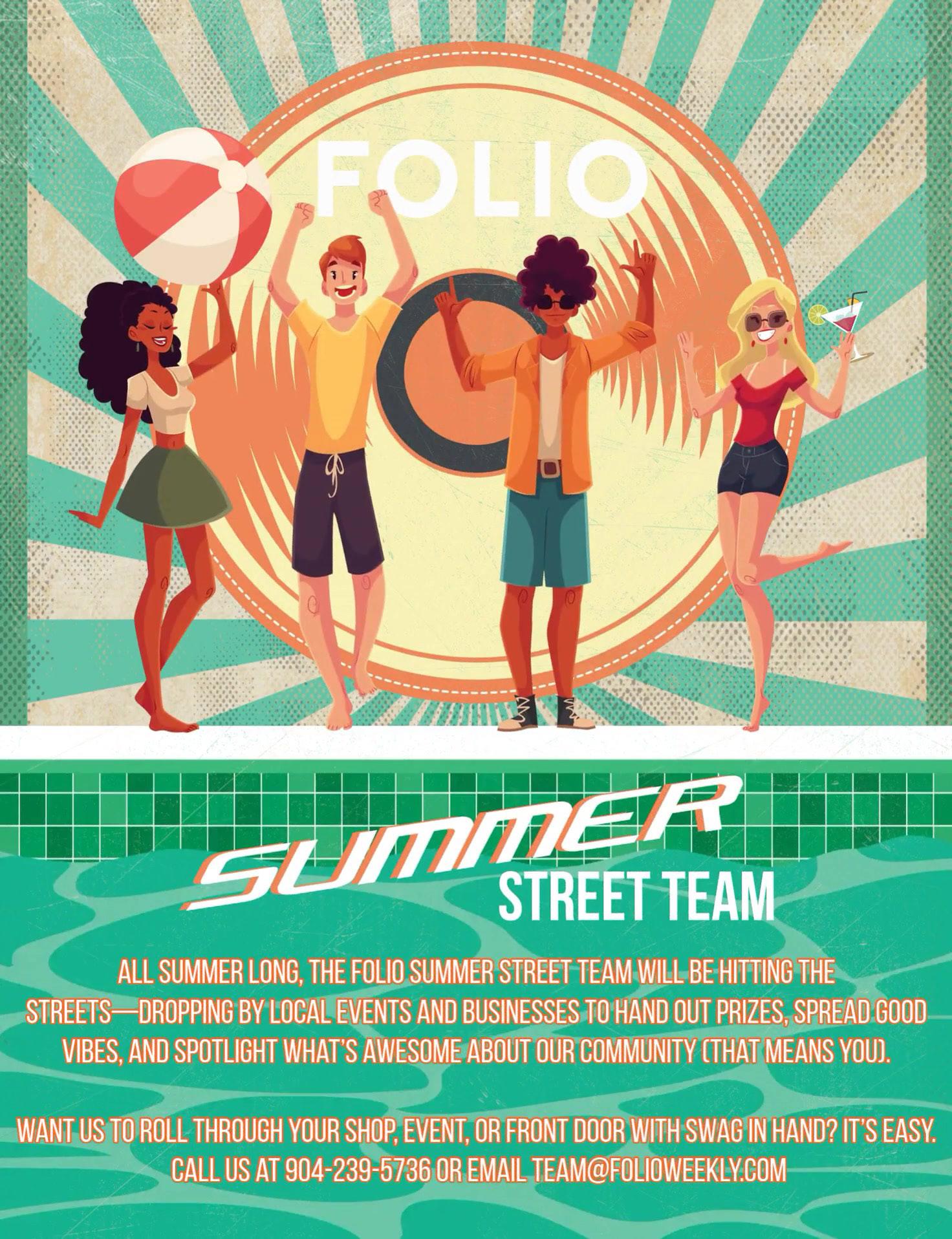

Earlier this month, a man strolled into the package room of an Avondale apartment complex like it was his personal Amazon warehouse. He took his time, browsed the options and walked out with four packages—none of which were his. Minor detail: he doesn’t actually live there. Fortunately for everyone (except him), cameras were rolling. The footage shows him casually shopping around like he’s choosing a new pair of sneakers, not committing a felony. Now, detectives would love to have a little chat with him, specifically about how mail works and how taking packages that don’t have your name on them is, in fact, a crime. We’re also pretty sure the rightful owners of those packages wouldn’t mind getting their stuff back.

Words by Carmen Macri
When the Jacksonville Sheriff’s Office responded to a tip about a house on the Northwest side being used to distribute drugs, they launched an investigation. JSO’s SWAT Team, Narcotics Unit and District 5 and 6 Task Force officers searched the home and found cocaine, oxycodone, marijuana and several firearms. But the search didn’t stop there — trigger warning — it got worse. While 49-year-old Marquis Williams was arrested on multiple drug and weapons felonies, officers also found several dogs, dogfighting equipment, trophies and books. Animal Control was called in and discovered more paraphernalia, with dogs kept in skyboxes or chained and severely neglected. Officers also found young raccoons, turtles and most shocking, a 9-foot alligator in a cage with no water and bones scattered on the ground, suggesting it had been fed other animals. A Florida Fish and Wildlife nuisance gator wrangler safely removed the reptile. Williams now faces over a dozen additional charges, including animal abuse, illegal alligator possession and promoting


Jacksonville's Jazz Radio — cool, classic, timeless. From the legends to today's contemporary greats, we bring you the sound that moves you. We bring the sounds of contemporary jazz right to you.
Available on the air at 89.9 HD4 or streaming at jaxmusic.org and the WJCT app.
• Iconic jazz legends and today’s contemporary greats, 24/7
• A timeless, curated mix of classic and contemporary jazz
• Streaming live on 89.9 HD4 and online at jaxmusic.org and the WJCT app anytime


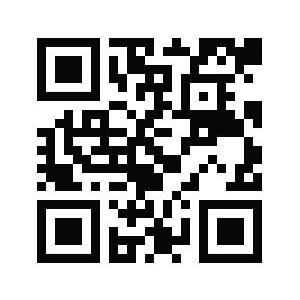
Jamy De Vries, a long-time Jacksonville resident and an avid traveler, said, “On paper, the U2C sounds like a great idea, but you couple that with how large Jacksonville is, and the fact that it will probably only service Downtown… you have a glorified parking-lot-to-stadium service.”
De Vries also claimed that a city like Jacksonville would benefit a lot from a convenient subway system or tram that runs consistently so that people would be more motivated to actually use the services.

De Vries is not alone in his judgment of the U2C, many Jacksonville residents have been quick to voice their concern about the project. One such individual is Zachary Yaros, a lifelong Jacksonville resident who has never owned a car. Yaros stated, “Even as someone who stands a lot to gain from the addition of the U2C, I don’t see it expanding its services to an area that would genuinely benefit my day-to-day life.” Yaros lives in Orange Park, an area of Jacksonville that the JTA has not announced any plans of extending the U2C to. However, Yaros also stated that he is an avid Jacksonville Jaguars fan and frequently makes the commute to Downtown Jacksonville. “If this new system is as efficient as it claims and these AVs actually arrive every 5-7 minutes, then I could definitely see it being useful during busy Downtown events. It might even make the flow of traffic in and out of the Jags games better,” said Yaros.
A modernization and extension of the Jacksonville Skyway was also included in the plan for the U2C. Jacksonville’s Skyway was previously infamous for being incredibly slow, inefficient and an overall waste of time. However, according to this new plan from the JTA, the Skyway could see some changes to make it a viable mode of transportation for those in the area.
The location for the Holon AV manufacturing facility was chosen to be the Imerson Industrial Park, where the factory will produce autonomous vehicles for cities around the country.
We reached out to the JTA for an interview regarding these public transport changes but did not get a response.







Liz Buys Houses Connects Home Sellers with Legitimate Cash Buyers Nationwide! No Repairs. No Fuss. Selling my home with Liz Buys Houses was a gamechanger! Their expertise and support throughout the process were unparalleled. I couldn't have asked for a smoother sell. KUDOS to this amazing team!

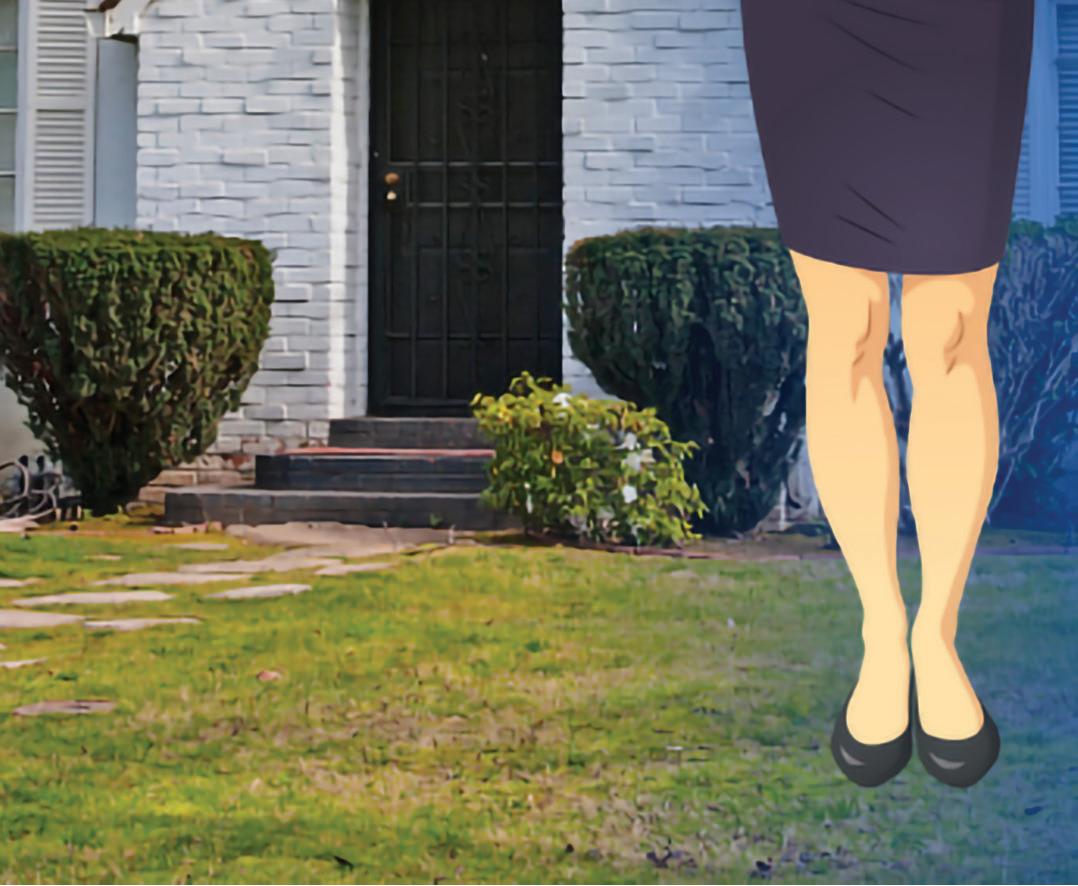




-Michael Beck
We work fast and are ready to help with your sale when you are. Call today to see if our fast cash o er aligns with your home sale needs!
Words by Carmen Macri
With great power comes great responsibility — and no one takes that more seriously than the keyboard warriors.
Welcome to the digital age, where online vigilantes thrive. You know the type: Facebook detectives and Twitter sleuths (and no, we’re not calling it X) who dig up decade-old receipts in the name of accountability. Sometimes it’s overkill … but sometimes, it’s exactly what’s needed.
They come in many forms, but today we’re zeroing in on the infamous Facebook groups. You know the ones; you join “just for laughs,” and next thing you know, it’s 2 a.m. and you’re 87 comments deep in drama you have no business caring about.
One group that’s been steadily gaining traction— brought to our attention by an avid “Folio” reader who figured we’d be into the tea—is Vote With Your Dollars Too NE Florida. A private Facebook group with over 1,500 members dedicated to “spilling the tea on owners and their business, along with politicians such as Ron DeSantis.”
What does that mean? We’re so glad you asked.
Dedicated Facebook crusaders do the dirty work — digging up the not-so-pretty pasts of business owners and local politicians who’d probably rather keep certain things under wraps. Once they’ve got the receipts, they post them for all to see, often naming names and tagging businesses. The post that pulled us in? A screenshot involving the owner of two well-loved bistros, who didn’t hesitate to spill the tea on a local meatball spot after a group member reached out. And this wasn’t hearsay — the owner of said meatball restaurant has a track record of racist, homophobic and transphobic posts that are still very much live.
Another infamous Jacksonville scandal — one that made waves statewide — is also mentioned in the group: the controversy surrounding a local bakery. If you, like us, were blissfully unaware, here’s the rundown: a few years back, during Pride Month, the bakery posted a tone-deaf message on social media that read, “Straight Pride: It’s natural. It’s worked for thousands of years, and you can make babies.”

Unsurprisingly, the post blew up for all the wrong reasons. The backlash was swift, and the bakery eventually issued a public apology. But for this group, the damage was done. The apology didn’t cut it. To this day, hundreds of people continue to boycott the business, receipts in hand and ready to remind anyone who forgets.
The group even takes it a step further, maintaining a running list of businesses to avoid due to socalled “problematic behavior.” In theory, it sounds helpful, especially when there are receipts to back it up. But dig a little deeper, and you’ll notice not every business on the blacklist has a scandal to its name. Some made the cut simply because the owner leans Republican. Suddenly, the line between accountability and political policing starts to blur.
But that’s an entirely different story on cancel culture, one we aren’t diving into just yet.
Another infamous Facebook group that is all about airing out peoples’ dirty laundry is Are We Dating the Same Guy? Now, there are two versions of this gem: the Jacksonville page — heavily moderated, no slander, very tame (read: fairly uneventful) — and then there’s the Jacksonville/St. Augustine/ NE Florida spin-off. That one is the Wild West. The moderation is looser, the stories are bolder and the women do not hold back. Screenshots, warnings and cautionary tales abound. It’s part community watch, part reality show, and it’s impossible to look away.
This group leans less political and more … recreational, though no less fascinating. Originally intended as a space for women to discreetly flag unfaithful partners, Are We Dating the Same Guy? has evolved into something much different.
These days, it’s not so much about catching cheaters as it is about preemptive background checks. Women now post profiles of men they’ve matched with (sometimes before so much as a “hey’) seeking any tea, red flags or reputational breadcrumbs.
The comment sections? Think “Burn Book” but crowd-sourced and crowdsanctioned with a touch more digital permanence. It’s messy, oddly methodical and undeniably entertaining.
As someone who’s had the distinct misfortune of spotting not one, but two exes (still very much in my contacts) featured on the page — complete with less-than-glowing reviews from other women — I can personally attest to its addictive quality. What started as mild curiosity quickly spiraled into nightly doomscrolling, not out of necessity but sheer, unapologetic entertainment.
Why do we find these types of groups so addictive?
Our brains are hardwired to chase that dopamine hit from watching strangers’ messy lives play out online. It’s like a never-ending, bite-sized reality show you can’t look away from. Take groups like Vote With Your Dollars Too — they don’t just dish dirt, they feed off that self-righteous rush that comes with boycotting businesses that don’t match your beliefs.
Neuroscientists found that watching drama lights up the same brain areas as real emotions. Seeing a fight or scandal triggers a dopamine rush—the brain’s pleasure chemical—the same one that fuels addictions to gambling, social media and even falling in love.






Through the noise of the crowd, past the lights and behind the curtains is River City Theatre, a new nonprofit performing arts organization. More than a production company, River City Theatre is reimagining the role of a performance art organization’s role in the community through reimagined stories, collaboration, engagement and empowerment. And most notably is stepping up to the plate by putting on eight shows of the family-friendly Lionel Bart’s “OLIVER!”
With
atre’s executive
Stephen Billy, River City The
director, heart has always lain in directing.

“Funny enough, I was in ‘Oliver’ when I was 10, and that was kind of my big moment. That was like, OK, I know I want to do theater, but what capacity will I be involved in theater?” Billy recalled. “But it was just such a pivotal point in my life. And I remember, you know, the memories and experiences that I had there. So I knew long term I wanted to have an organization that is all about community and having people together and creating an environment and an organization where you have those same shared experiences that, you know, I had as a child, and want that for other people.”
Billy, along with his longtime friend and choreographer, Katie Raulerson, music director Clint Weinberg and with the help of his board of directors, who he credits for much of the nonprofit’s success, launched River City Theatre this January. At the root of everything, its mission is rooted in inclusivity and community, ensuring there’s a place for everyone to get involved, whether on stage or behind the scenes, regardless of socioeconomic background. A strong emphasis is placed on collaboration and connection with the goal of becoming an active and engaged part of Jacksonville’s vibrant theater landscape.
“I’m a firm believer that the quality of life in a community is better with having the arts and to be contributing to that is a huge point for us. And we really want to make sure that we’re enhancing the quality of life for those in Jacksonville and surrounding communities,” Billy shared.
River City Theatre isn’t just making waves with its powerhouse creative team and deep community roots—it’s also setting itself apart with the way it’s reimagining the classic “OLIVER!” This marks the organization’s debut production, and it’s one that carries a personal spark. Billy and his team return to the story with fresh eyes and a full heart.
This version won’t unfold on a traditional proscenium-style scale. Instead, it will be performed in the round, with the audience encircling the action from all four sides. That means no curtains to hide behind, no shadows to disappear into, just bold, open storytelling where every angle counts. It’s a setup that demands creativity and invites reinvention, offering a new lens through which to experience a timeless tale.
“We want to think outside the box and have some productions be more immersive and in nontraditional theater spaces,” Billy explained. “It ties back into being out and visible in the community, and kind of with thinking outside the box there, we are going to expand to educational programming sometime next year.”
Eight performances will light up Betsy Lovett Hall at the Episcopal Church of the Good Shepherd, running July 17–20 and July 24–27. All shows begin at 7 p.m. and tickets are $25. For tickets and more information, visit rivercitytheatre.com.
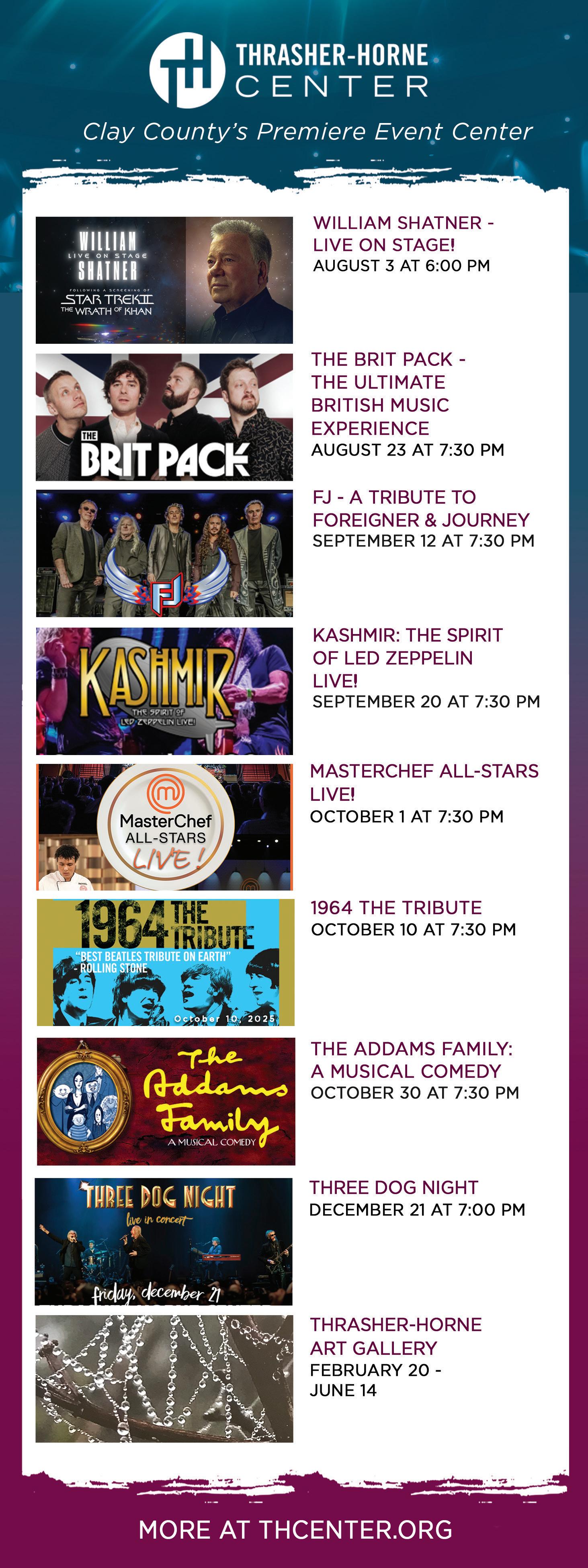
Words by Savanna Stillwagner & photo by Josh Eckstein on Unsplash
Walking from the University of North Florida Fine Arts Center where someone asks if you want to talk about Jesus to the UNF Green where groups are playing worship music and throwing a frisbee to the library with marker boards asking “Do you know who God is?” and a table right next to posing a similar question. Walking to the UNF Student Union, there are signs every six to 12 feet advertising the next Bible study group night or worship service on campus.
None of this is crammed down your throat, but it’s al ways just there on this Jacksonville college campus. We wanted to know why.
We spoke with nondenominational organiza tions because they tend to target more young adults, especially those questioning the spiri tual aspect of their life, naturally.
Through our interviews with people in the community on and off the UNF campus, there were no answers, there were theories, ideas and opinions, and we are here to share them because the culture of the most prominent university in Northeast Florida is important for residents of Jacksonville to know about.
Northeast Florida is known to be a part of the Bible Belt, referring to a portion of the Southeastern United States where Christianity and Bible-believing religions are in great numbers. These states typically range from Texas to North Carolina, going as far north as parts of Montana and as far south as northern Florida.
Jacksonville being in an area of the belt creates a community of Christianity for young adults beyond Bible studies and churches — Christian universities, bookstores, thrift stores — all of these hotspots for young adults.
“Why is the Christian community so large in Jacksonville, specifically on university campuses?”

Speaking of hot spots, the hot spot in a young adult’s life from around 18 to 25 is a prominent time to be asking questions about religion, the meaning of life and if there is a higher power.
We spoke to so many individuals in the Christian community, and when asked the following question, this is the one answer we got in common:
Celebration Church Senior Director of Next Gen Mission and Outreach John Wyatt summed it up: “We love to do outreach to the young adults. We feel that 18 to 25 is a prime time to really fall in love with Jesus … And so, a big time people are making their decisions. So we really try to come alongside young adults.”
Wisdom Vanna and Keisha Surin, both UNF students asking if students are interested in their Bible club Cornerstone, both found themselves involved in a church group on campus after the group was finally able to answer questions the two had been seeking.
“[God’s word] is proven to be fact through science and human history,” said Surin.
Specifically, their Bible club studies true prophecies in the Bible.
Many mentors in the Christian community spoke similarly saying it’s “prime time” for people to make these strong decisions in life where curiosity and thought independence grows.
In addition to the questioning of the meaning of life and if anyone is calling the shots up high, the questioning of one’s political beliefs weighs heavy on a young mind as well — especially the red or blue identifying question.
Where colleges and universities are typically stereotyped as left-leaning, according to Church of Eleven22 Disciple Group Leader Woody Norris, “I think there are a lot more conservative students in America than you think.”
Norris said liberals may voice their opinions more, but there might be more conservative students than meet the eye.
There is one church in Jacksonville that seems to cover the majority of students at UNF, especially those in what seems to be the largest group on campus: UNF Navigators.
The church many of those students attend is Church of Eleven22. From our experience, we have found this church to be fairly conservative with Church of Eleven22 Pastor Joby Martin, who has a strong Southern accent, long beard and tattoos across his body.
Despite any politics thrown into the preaching, Martin’s words ring true to the people of his church, and just about everyone we talked to spoke highly of his sermons.
Florida State College at Jacksonville student Tammy Scott felt rejected, after being divorced three times, from numerous churches in Jacksonville, which she would not provide the names of, but Church of Eleven22 was the first church that really accepted her ever since spring of 2024.
She also noted, “Joby Martin is absolutely wonderful,” and “Eleven22 is the biggest LGBTQ contributor, and we welcome everybody.”
“I believe that Pastor Joby Martin just brings the word to life — the way he teaches, the way he preaches — and I think a lot of people, regardless of whether they are 18 or in their 80s, can relate to how he brings the word to life,” said Norris.
“He is an incredible conduit of God’s word to a lot of people, and he will not take credit for it because it’s just not his nature, and it shouldn’t be anybody’s nature to do that. When you hear it, he really relates it well,” said FSCJ professor and Bible Club faculty sponsor Jerry Shawver.
With the overwhelming praise Martin received from his church attendees, we wanted to know what makes his preaching so popular.
Pastor Joby told “Folio” in an email answering why so many young adults are interested in Christianity, especially through the Church of Eleven22, “We’re a movement for ALL PEOPLE to discover and deepen a relationship with Jesus Christ … It’s not about a program or a building — it’s a movement of the Spirit of God … We’re grateful to be in a city — and a state — full of churches, big and small, who love Jesus and are serious about the Gospel.”
So, despite the conservatism the church may seem, it really has taken its grasp on the Jacksonville student community.
Of course, it’s impossible for those in the Christian faith to ignore that “God’s work” is in play when it comes to the high population of young adults in the Christian community in Jacksonville.
Shawver, Wyatt, Martin and everyone we spoke to would agree.
While the ideas and theories are plentiful on the large population of the Christian communities in the young adult community in Jacksonville, the draw young minds have to the Christian religion will forever be a curious thought.


AMBAR: Do I still eat Hot Cheetos at the same speed I ate them at the ripe age of 9 years old? Yes. Do I eat so much that my stomach feels like what I imagine the fiery pits of hell are like? Also yes. As they say, if it ain’t broke, don’t fix it, and sometimes there’s no other remedy for my brief bursts of sadness like having bright red dust coating my fingers.
CARMEN: There was just something so special about sneaking into my divorce-split kitchen at 2 a.m. to steal a handful of Funyuns before scurrying back to bed, crumbs and all. Now, as I’ve grown older, wiser and hotter — and my Funyuns turned into cherries — I began wondering what my 2 a.m. Funyun run says about my current emotional damage. Because, let’s be honest, it has to mean something…right?
AMBAR: We’ve come to realize that these childhood snacks aren’t just food. They’re emotional horcruxes. So what does your favorite childhood treat say about your very specific, possibly unhealed emotional damage?
CARMEN: If Funyuns were your childhood go-to, how are you? Seriously, are you OK? Probably not. You were probably the kid everyone left out — maybe because you smelled like a walking onion ring. You’re probably harboring a lifelong defense mechanism that’s equal parts salty and crunchy. A tough exterior to keep people at arm’s length but secretly hoping someone cracks the code and sees the soft, vulnerable center beneath… like an onion.
AMBAR: Not to go all Freud on you, but if a Fruit Roll-Up was your favorite childhood snack, you probably have an oral fixation and now lean toward cigarettes to try and forget about the time your mom forgot to pick you up from soccer practice and how that was the moment you realized you could only truly rely on yourself... and artificial strawberry flavoring. You’re fun, flirty, emotionally unavailable and have slight abandonment issues.
CARMEN: If Bagel Bites were your childhood snack, congratulations! You perfected the art of microwave mastery and emotional procrastination. You couldn’t wait the full three minutes without hovering the microwave like it
was a bomb about to explode. You’re probably a certified expert at putting a quick, cheesy band-aid on problems that need actual therapy. You dodge tough feelings like you dodge the last Bagel Bite in the box — pretending it’s not a big deal until you’re left staring at crumbs and regret.
AMBAR : If your favorite childhood snack was Ruffles Cheddar & Sour Cream, your emotional damage is layered, much like the flavor dust caked on your fingertips. You were probably a little too emotionally mature for your age, making adult-level snack decisions while other kids were still munching on Goldfish. You’ve been told to “stop taking things so personally,” which only made you take it more personally. You chase validation like it’s the last chip in the bag, and yes, you do still eat your feelings.
CARMEN: If Doritos were your childhood snack of choice, there’s a good chance your emotional foundation is held together by artificial flavoring and unresolved issues. You grew up craving intensity — not just in snacks but in life. Subtlety? Never heard of her. If nacho cheese was your Dorito of choice, you are the walking embodiment of loud opinions and louder outfits. You probably peaked during an elementary school talent show and have been chasing that high ever since. If it’s Cool Ranch, you thought you were better than the rest of us. Edgy, mysterious, a little too into astrology by age 11. Your emotional damage is hidden under a well-curated personality and at least three layers of ironic detachment. Deep down, you just want someone to ask how you’re really doing … but like, without making it a thing.
AMBAR : If your favorite childhood snack was a Cosmic Brownie, your emotional damage is baked in and topped with a false sense of whimsy. You were the kid romanticizing sadness before it was cool — journaling in gel pen while listening to Avril Lavigne and pretending your life was a tragic indie film. You crave stability, but only know how to function in emotional extremes: It’s either a dopamine binge or full-on dissociation.
CARMEN : Moral of the story, I think we all need a little bit of therapy.

At Florida State College at Jacksonville (FSCJ), students have the ability to earn degrees during three terms — spring, summer and fall, but it is the college’s annual tradition to hold only one commencement ceremony in late May. For summer and fall graduates of that year, this means waiting nearly a year to walk across the stage, sporting their cap and gown, and celebrating their academic accomplishments with their loved ones. As FSCJ continues to evolve, expanding its academic offerings and becoming a state college, the development of the institution’s commencement ceremony remains stagnant. The college is confident that a single large-scale annual ceremony is the inclusive and reasonable option based on the college’s budget and venue capacity despite recent concerns.
For a more in-depth perspective, “Folio” reached out to Jill Johnson, chief communications officer at FSCJ, who provided clarity on the administration’s approach. According to Johnson, FSCJ reviews its commencement program annually, focusing on “celebration, logistics, costs and student considerations.” Every spring FSCJ hosts a large commencement ceremony that honors graduates of the summer and fall term of the previous year, as well as its current spring graduates. This approach allows for a more more inclusive experience, accommodating thousands of attendees without ticket limitations, ensuring graduates are recognized equally, Johnson clarified.
When discussing factors that lead FSCJ to continue the route of an annual commencement, Johnson explained, the planning committee annually reviews their yearly budget and location to ensure the best approach to commencement. “We focus on the student experience and the availability of a date, time and location that allows for us to maximize participation and reduce the barriers for students to participate and their guests to share in that celebration,” Johnson said. This spring, FSCJ celebrated 1,600 graduates who were also able to include their friends and families due to the lack of ticket limitations. “Should a smaller facility need to be found, we, potentially, would be unable to keep it open.” Johnson explains, meaning, with a smaller venue would come ticket limitations.
Though FSCJ administration commits to annual meetings on commencement, does its administration take into consideration student feedback or potential involvement in the discussion? When asked, Johnson explained, “We have meetings with students on campus each year with the president [of the college] where commencement is typically discussed,” she said. “Other student-led meetings with members of our leadership team take place through organizations like SGA (Student Government Association) and through student life. Commencement is often a topic and students have always been complimentary of the quality and scale of this event.”
FSCJ may not fund multiple commencement ceremonies in a single year, but its administration has made active and effective efforts to ensure the support and recognition of those who have accomplished academic achievements through their institution.
“Any student who met graduation requirements in the previous summer, fall or spring terms is invited to attend Commencement in May. We do not exclude any graduates from our annual commencement ceremony which recognizes all students who graduated that academic year.” Johnson stated. Furthermore, FSCJ provides various celebratory opportunities dependent on the program of study as well as an annual Grad Bash in May.


this puzzle like a regular sudoku, but instead of using numbers, use the letters B-A-I-L-E-Y (for Downtown Investment Authority Board Member Carrie Bailey) to fill each row, column and box.
